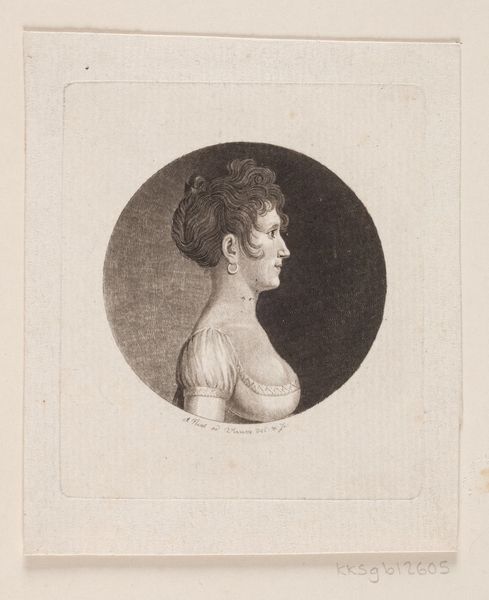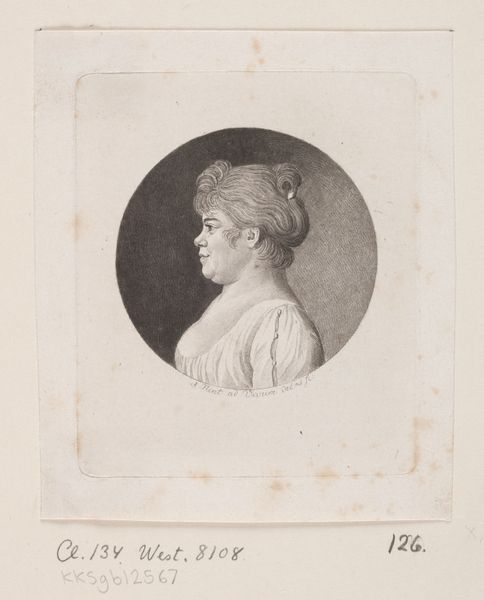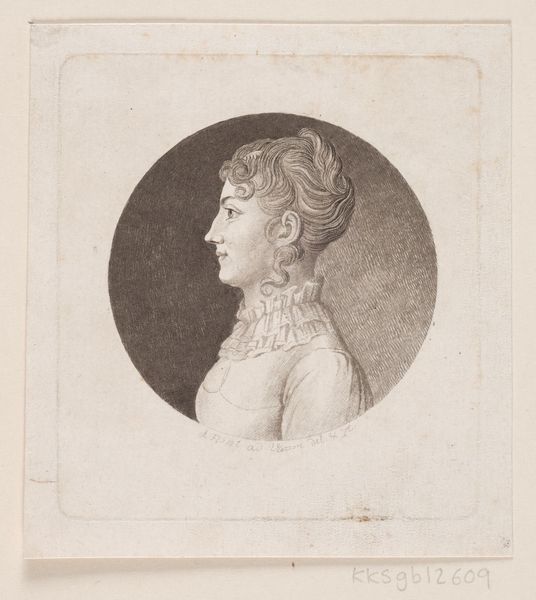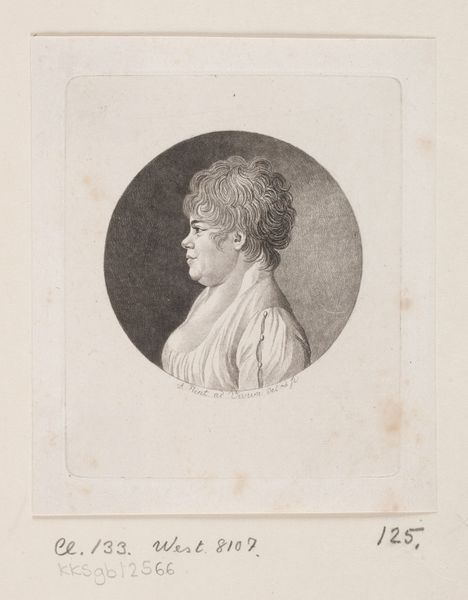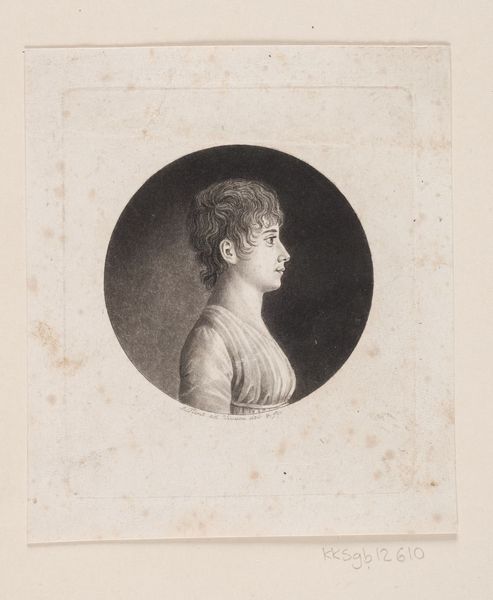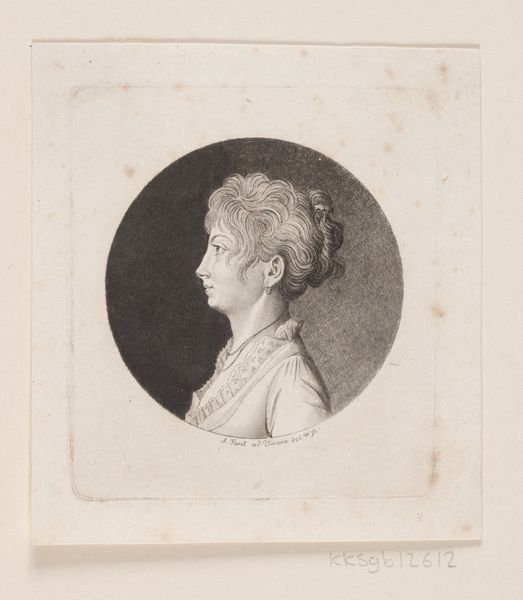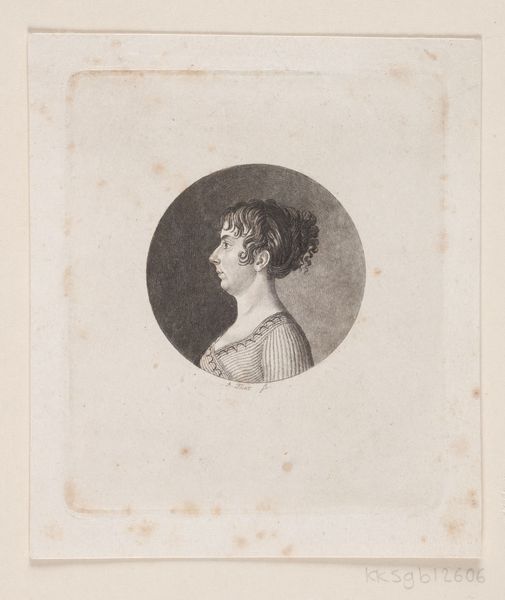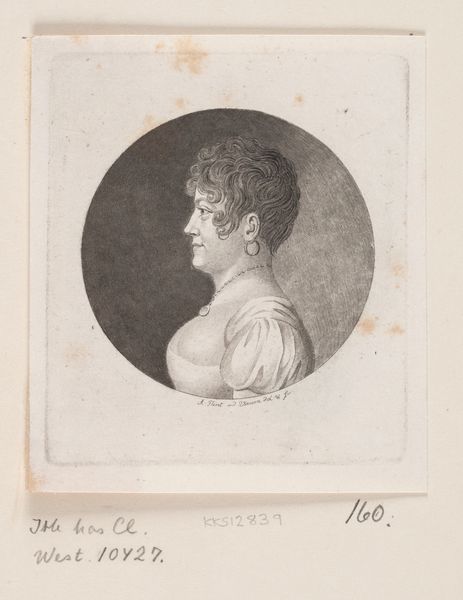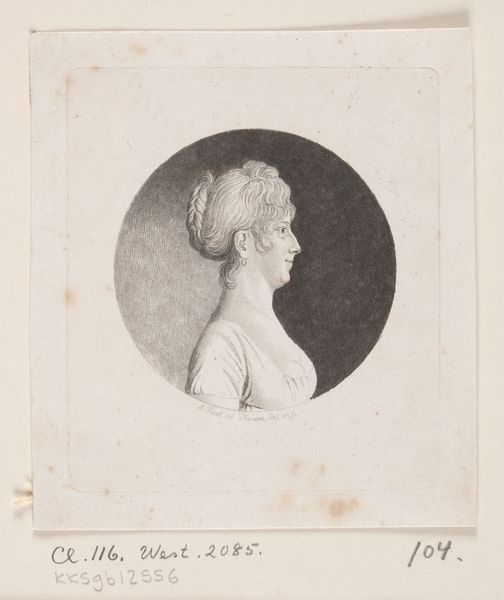
drawing, print, pencil, engraving
#
portrait
#
pencil drawn
#
drawing
#
neoclacissism
# print
#
pencil sketch
#
pencil drawing
#
pencil
#
engraving
Dimensions: 60 mm (None) (billedmaal), 80 mm (height) x 71 mm (width) (plademaal)
Curator: Welcome. Before us we have an intriguing portrait, simply titled "Ubekendt kvindeportræt," or "Unknown Woman Portrait," created sometime between 1767 and 1824. The artwork resides here at the SMK, Statens Museum for Kunst. It appears to be a drawing and engraving. What strikes you first about this image? Editor: There's a gentleness to it, wouldn’t you say? Even a vulnerability. It feels more intimate than, say, a grand oil portrait. The grayscale gives it a sort of timelessness, but the directness of her gaze, despite it being a profile view, invites you into her space. She’s got secrets, I think. Curator: Indeed. The use of pencil and engraving lends it that immediacy. As a portrait, particularly from this Neoclassical period, we see a tension between public presentation and private emotion. Notice how the stark, classical profile is softened by the delicate shading around her face and the somewhat extravagant hairstyle for the time, reflecting an interesting intersection of societal expectations and individual expression. Editor: That contrast really hits home. You get the sense she's playing the part she needs to play, adhering to the fashionable conventions of her time but maybe a bit reluctantly. Her hairstyle screams exuberance, but the pursed lip suggests… restraint. What could it mean, this duality? Curator: It speaks volumes about the constraints placed on women in that era. Portraiture, especially, was about crafting an image—power, wealth, status. But here, we sense an individual struggling against those imposed roles. Her lack of ornamentation, aside from that single bow on her shoulder, underscores that quiet resistance. Even in its incomplete state – for we only see head and shoulders – it hints at social commentaries that feel unexpectedly modern. Editor: I agree. And to be 'unknown,' it amplifies that point, don't you think? Stripped of her specific identity, she becomes a representative figure for all women who straddle the lines of expectation and truth. Is that melancholy I see in the rendering around her eyes? Curator: Precisely. The ‘unknown’ status transforms her from a specific person into an emblem of her time. Even details like the dark backdrop add to the psychological intensity. The oval format often signals that feeling. She becomes a meditation on female identity in a world of formal and social boundaries. Editor: Well, I feel like I know her a little better now. That two minute glance unlocked an enigma. I wonder who she really was! Curator: Art always seems to be speaking to us in more profound and compelling ways than simple documentation can achieve.
Comments
No comments
Be the first to comment and join the conversation on the ultimate creative platform.
